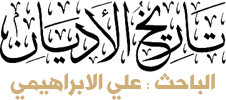ان اسلمة العلوم ليست بدعة جاءت بها المؤسسة الدينية بعد الثورة الاسلامية في ايران ، بل هو مشروع اقدم يمكن ان نراه في الملاحظات التي كتبها ( ابو الأعلى المودودي ) حول جامعة ( عليكرة ) الهندية في ثلاثينات القرن العشرين ، حيث كان ( المودودي ) يعتقد ان الجامعة التي تنشأ في وسط إسلامي وعلى أساس الارتباط بالدِّين يجب ان تعكس الثقافة الاسلامية لا الثقافة الغربية .
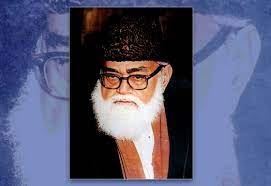
وقد شهد العالم الاسلامي انعقاد عدة مؤتمرات لمناقشة اسلمة العلوم في ١٩٧٧ و ١٩٨٢ و ١٩٨٤ م , في دول مختلفة وبحضور شخصيات علمية كبيرة . وتأسست وفق هذا المبدأ جامعات في مختلف البلدان حتى غير الاسلامية منها ، كما صدرت في صدى لهذا الامر عدة مجلات مثل ( Muslim Education Quarterly ) في بريطانيا .
ولم يقتصر الامر على العالم الاسلامي ، بل ان المجتمع المسيحي سعى جاهداً لعمل هذه المزاوجة بين العلم والدين في إطار الجامعة ، فنظّم عدة مؤتمرات مشابهة مثل ” العلم في إطار إيماني ” الذي انعقد في كندا عام ١٩٩٨ ، الى الدرجة التي اصبح فيها مصطلح ” Theistic Science = العلم الديني ” متداولاً في الأوساط الثقافية الأوربية .
وقد شهد مؤتمر ( شيراز ) ومؤتمر ( طهران ) في عامي ١٩٨٠ و ١٩٨٢ م بداية وضع الأسس والضوابط للتحول نحو منهجية علمية دينية وتكوين صورة عامة للغايات المطلوب تحقيقها .
ان اهم مشكلتين واجهتهما الأمة الاسلامية عند استيرادها للمادة العلمية الغربية تمثلتا في انتقال الأيدولوجيات الغربية الفكرية كحالة عرضية مصاحبة ، بما تحمل من رؤى وتنظيرات لا تتوافق والمجتمع الشرقي ، وكذلك في فشل النخبة ” التنويرية ” الداعية للتغريب في تحقيق اي منجز علمي عملي او تطبيق مشروع العمران المدّعى كسبب لاستيراد النظريات الغربية .
امّا على المستوى العملي لأسلمة العلوم فيناقش بعض الباحثين المسلمين جملة من الاعتراضات ويحاولون معالجتها ، من قبيل : ” كيف يمكن إثبات ان العلوم التطبيقية والإنسانية كالفيزياء والاجتماع تخضع لتصنيف ديني ؟ ، وان موضوع الأسلمة يعني التراجع العلمي ، ليس بين العلم والدين من آصرة موضوعية للجمع بينهما ، ان الأسلمة تعني التضييق على الأفكار ، ان الأسلمة تعني المواجهة وبالتالي الأزمة ؟ ” .
فيرون ان هذه الاعتراضات وليدة الفهم الخاطئ لموضوع اسلمة العلوم ، وهي شبيهة بالفهم الخاطئ لبعض الجهات الداعمة للأسلمة والتي ترى انها تعني : الاهتمام بالإعجاز العلمي في القران والسنة ، او ادخال براهين تثبت وجود الله ، او تحكيم التعاليم الدينية على اجواء البحث العلمي .
امّا ” أهمية العلم الديني ” فتنشأ عن مقدمتين : الاولى : عدم خلو أية نظرية علمية من قَبْلية ميتافيزيقية ، بالمعنى الذي يورده ( ابو الأعلى المودودي ) من ان الحقائق الطبيعية مجردة وواحدة لكنّ التفسيرات والتركيبات والتوظيفات البشرية هي المتعددة حيالها ، لذلك نجد فلسفة تقود العلم في روسيا سابقاً بما يتوافق مع العقيدة الشيوعية ، فيما تزيح الفلسفة المادية الغربية ( الله ) عن الساحة العلمية ، وهو الامر الذي يراه ( روبرت يانغ ) ايضاً . ومثال ذلك ان ثلاثة علماء هم ( عبد السلام ) و ( واينبرغ ) و ( غلاشو ) نالوا جائزة نوبل لمعالجتهم العلاقة بين الطاقة النووية الضعيفة والطاقة الكهرومغناطيسية لكنّ دوافعهم تجاه هذه الحقيقة كانت متباينة ، ف ( عبد السلام ) يرى الامر بنحو كشف حقيقة التدبير في الكون ، و ( غلاشو ) يراه قضية جزئية عن العلم ، و ( واينبرغ ) يراه تبسيطاً لمسائل متناثرة .
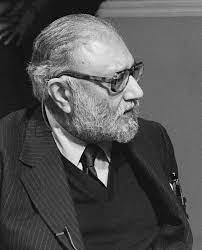
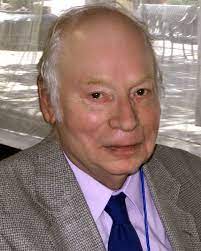
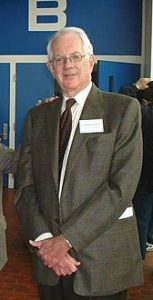
ومن هنا لا يريد الاسلام تغيير الحقائق الطبيعية وخصائص العناصر ، بل هو يريد اخضاع مسار تلك العلوم لفلسفة ميتافيزيقية ترتبط بالحقيقة الإلهية ، سواءً كان ذلك يأتي عن طريق المختبر او غيره من مجالات العمل العقلي . والمقدمة الثانية : دور الفكر الديني وأثر العقيدة على مسار التطبيق للبحث العلمي ، وهنا يتوافق بعض باحثينا المسلمين مع طرح الدكتور ( ريتشارد تامبسون ) رئيس ( لاهويا ) للأبحاث الذي يشكّ في جدية الضمانات التي يمكن للعلمانية ان تقدمها للحماية والوقاية من نتائج الصراع المحموم لامتلاك سلطة التقنية ، لا سيما في المجتمع المادي ، بخلاف الدين الذي يجعل الانسان والمؤسسة ترتبط بموجود أسمى ، وبالتالي تكون مسيرة العلم محكومة بأهداف أنبل .
فطبقاً ل ( موريس ويلكنز ) – الحائز على جائزة نوبل في الطب – فان ما يقارب ٥٠ ٪ من العلماء المعاصرين متورطين في برامج التسلّح العالمية . الامر الذي يجعل للقيم الدينية دوراً محورياً لضبط الحركة العلمية ويؤمن مستقبلها ، وهذا ما نجد تطبيقاً له في فتوى (السيد الخميني ) التي تحرّم انتاج القنبلة النووية في ايران ، بما يعد ضمانة حاكمة ترتبط بالوجدان والسياسة والمختبر هناك .
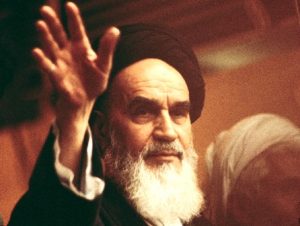
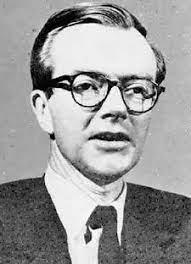
ومفهوم ” العلم الاسلامي ” الذي تنوعت تفسيراته بين كونه العلم الذي يتشكل في إطار الثقافة الاسلامية ، او العلم الذي يُعنى بتفسير القران والسنة ، او الذي يعالج المسائل العلمية في إطار إسلامي ، او الذي يهتم بمعاجز القران والسنة ، فهو الذي يساعد في حقل الإلهيات وبمعرفة الله ، بالإضافة الى تلبيته للحاجات الاساسية للأمة الاسلامية ، او ما ذهب اليه الدكتور ( مرتضى مطهري ) من عدم واقعية تقسيم العلوم الى دينية ولا دينية ، فخاتمية الاسلام تجعله ملزماً باستيعاب كافة العلوم بنحو الشمولية الناشئة عن حاجات المجتمع الاسلامية الواقعية .
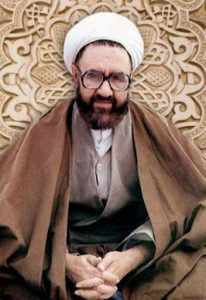
ويستعرض الدكتور ( مهدي كلشني ) جملة من المشاكل التي تواجه توصيف الجامعات الإيرانية القائمة بالإسلامية ، فالكوادر التعليمية تخرجت في ظل المفاهيم العلمانية ولازالت تماشياً مع المنهج المادي للعلم في الجامعات الغربية التي يتم استيراد المادة العلمية منها ، ولازال الطلبة يفتقدون الخطوات الثقافية الكافية لأسلمة اذهانهم ، فيما تفتقد المؤسسة الثقافية دافع الحرص المناسب لتعميم الرؤية الاسلامية ، وتفتقر خطوة اضافة بعض المقررات الدينية للجامعات الى معالجة الاستقلالية والانفصال الذي يجده الطالب بين مادته العلمية وبين تلك المقررات . لذلك يرى ( الدكتور كلشني ) ان ماهية ” الجامعات الاسلامية ” ذات بعدين ، ظاهر يمثل شكلها الخارجي ، وباطن يعبر عن بنيتها الداخلية . ويتحقق الاول بمراعاة المظاهر والشعائر التي تعرف الناظر اليها بانتمائها الاسلامي ، غير ان هذا ليس كافياً وحده ، حيث ان ما هو ضروري للنموذج الاسلامي الذي نتحدث عنه هو طبيعة جوهره وبنيته الداخلية ، وهو ما يتحقق عبر هيمنة التصور الاسلامي على أبناء تلك الجامعات ، اي ان تتجلى الخصوصية الإلهية في مفهومهم عن الكون والمجتمع والهدف من الحياة بحيث تتم صياغته طبقاً للمبادئ الاسلامية .

****
Islamic Universities: From Secularism to Religion
The Islamization of science is not a heresy brought by the religious establishment after the Islamic revolution in Iran. Rather, it is an older project that we can see in the notes written by (Abu al-Ala al-Mawdudi) about the Indian University of Aligarh in the thirties of the twentieth century, where (Mawdudi) believed that the university Those that arise in an Islamic milieu and on the basis of attachment to religion must reflect the Islamic culture, not the Western culture.
The Islamic world witnessed the holding of several conferences to discuss the Islamization of sciences in 1977, 1982 and 1984 CE, in different countries and in the presence of great scientific personalities. According to this principle, universities were established in various countries, even non-Islamic ones, and several magazines were issued in response to this matter, such as (Muslim Education Quarterly ) in Britain.
And the matter was not limited to the Islamic world, but the Christian community strived to achieve this marriage between science and religion within the framework of the university, so it organized several similar conferences such as “Science within the framework of my faith” which was held in Canada in 1998, to the extent that the term has become a term. Theistic Science = Religious science “in circulation in European cultural circles.
The (Shiraz) conference and the (Tehran) conference in 1980 and 1982 AD witnessed the beginning of laying the foundations and controls for the shift towards a religious scientific methodology and the formation of a general picture of the goals to be achieved.
The two most important problems that the Islamic nation faced when importing Western scientific material were represented in the transmission of Western intellectual ideologies as an occasional accompanying case, with visions and theories that do not correspond to Eastern society, as well as in the failure of the “Enlightenment” elite calling for Westernization to achieve any practical scientific achievement or the implementation of the urbanization project. Alleged as a reason for importing Western theories.
As for the practical level of the Islamization of sciences, some Muslim researchers discuss a number of objections and try to address them, such as: “How can it be proven that applied sciences and humanities such as physics and sociology are subject to a religious classification? Islamization means restriction of ideas, that Islamization means confrontation and consequently crisis?
They see that these objections are the result of a misunderstanding of the issue of Islamization of science, and it is similar to the misunderstanding of some parties supporting Islamism, which they consider to mean: attention to the scientific miracles in the Qur’an and Sunnah, or the introduction of evidence proving the existence of God, or the arbitration of religious teachings in the atmosphere of scientific research.
As for the “importance of religious science”, it arises from two premises: The first: that no scientific theory is free from metaphysical a priori, in the sense that (Abu al-Ala al-Mawdudi) mentions that natural facts are abstract and one, but human interpretations, structures, and employments are multiple towards them. Therefore, we find a philosophy that leads science in Russia was formerly in line with the communist creed, while Western materialist philosophy (God) removed from the scientific arena, which is what Robert Yang sees as well. For example, three scientists, (Abdul-Salam), (Weinberg) and (Glashaw) received the Nobel Prize for their treatment of the relationship between weak nuclear energy and electromagnetic energy, but their motives towards this fact were different. And (Glashaw) sees it as a partial issue of science, and (Weinberg) sees it as a simplification of scattered issues.
Hence, Islam does not want to change the natural facts and the characteristics of the elements. Rather, it wants to subject the course of those sciences to a metaphysical philosophy linked to the divine truth, whether that comes through the laboratory or other fields of mental work. The second introduction: the role of religious thought and the impact of faith on the course of application for scientific research. Here, some of our Muslim researchers agree with the proposal of Dr. Richard Thompson, president of Lahoya Research, who doubts the seriousness of the guarantees that secularism can provide to protect and prevent the results of the frantic struggle to possess the power of technology. , especially in a materialistic society, unlike religion, which makes man and the institution linked to a higher being, and thus the path of science is governed by nobler goals.
According to (Maurice Wilkins) – winner of the Nobel Prize in Medicine – approximately 50% of modern scientists are involved in global arms programs. Which makes religious values a pivotal role to control the scientific movement and secure its future, and this is what we find an application in the fatwa of (Sayyid Khomeini) which forbids the production of a nuclear bomb in Iran, which is a governing guarantee linked to conscience, politics and the laboratory there.
And the concept of “Islamic science” whose interpretations varied between being the science that is formed within the framework of Islamic culture, or the science that is concerned with the interpretation of the Qur’an and the Sunnah, or that deals with scientific issues within an Islamic framework, or that is concerned with the miracles of the Qur’an and the Sunnah, as it is the one who helps in the field of theology and knowledge of God In addition to meeting the basic needs of the Islamic nation, or what Dr. (Mortaza Motahhari) said about the unrealistic division of sciences into religious and non-religious, the finality of Islam makes it obligatory to absorb all sciences in a comprehensive manner arising from the realistic Islamic needs of society.
Dr. (Mahdi Kalashni) reviews a number of problems facing the characterization of the existing Iranian universities as Islamic, as the educational cadres graduated in light of secular concepts and are still in line with the materialistic approach to science in Western universities from which the scientific material is imported, and students still lack sufficient cultural steps to Islamize their minds, while The cultural institution lacks the appropriate motive to generalize the Islamic vision, and the step of adding some religious courses to universities lacks a treatment for the independence and separation that the student finds between his scientific subject and those courses. Therefore, Dr. Kalashni believes that the nature of “Islamic universities” has two dimensions, the external representing their external form, and the internal expressing their internal structure. The first is achieved by taking into account the manifestations and rituals that define the viewer of their Islamic affiliation, but this is not sufficient alone, as what is necessary for the Islamic model that we are talking about is the nature of its essence and internal structure, which is achieved through the dominance of the Islamic perception over the children of those universities, that is, to be manifested The divine specificity in their concept of the universe, society and the purpose of life so that it is formulated according to Islamic principles.
Note: Machine translation may be inaccurate
Universités islamiques : de la laïcité à la religion
L’islamisation de la science n’est pas une hérésie apportée par l’establishment religieux après la révolution islamique en Iran, c’est plutôt un projet plus ancien que l’on peut voir dans les notes écrites par (Abu al-Ala al-Mawdudi) à propos de l’Université indienne de Aligarh dans les années trente du vingtième siècle, où (Mawdudi) croyait que l’université Ceux qui surgissent dans un milieu islamique et sur la base de l’attachement à la religion doivent refléter la culture islamique, pas la culture occidentale.
Le monde islamique a été témoin de la tenue de plusieurs conférences pour débattre de l’islamisation des sciences en 1977, 1982 et 1984 de notre ère, dans différents pays et en présence de grandes personnalités scientifiques. Selon ce principe, des universités ont été créées dans divers pays, même non islamiques, et plusieurs magazines ont été publiés en réponse à cette question, tels que (Éducation musulmane trimestrielle ) En Grande-Bretagne .
Et l’affaire ne se limitait pas au monde islamique, mais la communauté chrétienne s’efforçait de réaliser ce mariage entre science et religion dans le cadre de l’université, elle organisa donc plusieurs conférences similaires telles que « La science dans le cadre de ma foi » qui fut tenue au Canada en 1998, dans la mesure où le terme est devenu un terme. Science théiste = Science religieuse ” en circulation dans les milieux culturels européens.
La conférence (de Chiraz) et la conférence (de Téhéran) en 1980 et 1982 après J.-C. ont vu le début de la pose des bases et des contrôles pour le passage à une méthodologie scientifique religieuse et la formation d’une image générale des objectifs à atteindre.
Les deux problèmes les plus importants auxquels la nation islamique a été confrontée lors de l’importation de matériel scientifique occidental ont été représentés dans la transmission des idéologies intellectuelles occidentales comme cas d’accompagnement occasionnel, avec des visions et des théories qui ne correspondent pas à la société orientale, ainsi que dans l’échec de la Élite des « Lumières » appelant à l’occidentalisation pour réaliser toute réalisation scientifique pratique ou la mise en œuvre du projet d’urbanisation. Alléguée comme raison d’importer les théories occidentales.
Quant au niveau pratique de l’islamisation des sciences, certains chercheurs musulmans discutent un certain nombre d’objections et tentent d’y répondre, telles que : « Comment prouver que les sciences appliquées et humaines telles que la physique et la sociologie sont soumises à une classification religieuse Islamisation signifie restriction des idées, et islamisation signifie confrontation et par conséquent crise ?
Ils voient que ces objections sont le résultat d’une incompréhension de la question de l’islamisation de la science, et c’est similaire à l’incompréhension de certains partis soutenant l’islamisme, qu’ils considèrent comme signifiant : attention aux miracles scientifiques dans le Coran et la Sunnah , ou l’introduction de preuves prouvant l’existence de Dieu, ou l’arbitrage des enseignements religieux dans l’atmosphère de la recherche scientifique.
Quant à « l’importance de la science religieuse », elle découle de deux prémisses : La première : qu’aucune théorie scientifique n’est exempte d’a priori métaphysiques, au sens où (Abu al-Ala al-Mawdudi) mentionne que les faits naturels sont abstraits et un, mais les interprétations, les structures et les emplois humains sont multiples à leur égard. Par conséquent, nous trouvons une philosophie qui dirige la science en Russie était autrefois conforme au credo communiste, tandis que la philosophie matérialiste occidentale (Dieu) s’est éloignée de l’arène scientifique, qui est ce que Robert Yang voit aussi. Par exemple, trois scientifiques (Abdul-Salam), (Weinberg) et (Glashaw) ont reçu le prix Nobel pour leur traitement de la relation entre l’énergie nucléaire faible et l’énergie électromagnétique, mais leurs motivations à cet égard étaient différentes. la voit comme une question partielle de la science, et (Weinberg) la voit comme une simplification de questions éparses.
Ainsi, l’Islam ne veut pas changer les faits naturels et les caractéristiques des éléments, mais veut plutôt soumettre le cours de ces sciences à une philosophie métaphysique liée à la vérité divine, qu’elle passe par le laboratoire ou d’autres champs de la pensée mentale. travail. Deuxième prémisse : Le rôle de la pensée religieuse et l’impact de la croyance sur le cours de l’application de la recherche scientifique Ici, certains de nos chercheurs musulmans sont d’accord avec la proposition du Dr Richard Thompson, président de Lahoya Research, qui doute du sérieux de les garanties que peut apporter la laïcité pour protéger et empêcher les résultats de la lutte acharnée pour posséder le pouvoir de la technologie. la science est gouvernée par des buts plus nobles.
Selon (Maurice Wilkins) – lauréat du prix Nobel de médecine – environ 50% des scientifiques modernes sont impliqués dans des programmes d’armement mondiaux. Ce qui fait des valeurs religieuses un rôle central pour contrôler le mouvement scientifique et assurer son avenir, et c’est ce que l’on trouve une application dans la fatwa de (Sayyid Khomeini) qui interdit la production d’une bombe nucléaire en Iran, qui est un gouvernement garantie liée à la conscience, la politique et le laboratoire là-bas.
Et le concept de « science islamique » dont les interprétations variaient entre être la science qui se forme dans le cadre de la culture islamique, ou la science qui s’occupe de l’interprétation du Coran et de la Sunna, ou qui traite des questions scientifiques au sein de un cadre islamique, ou qui concerne les miracles du Coran et de la Sunna, car c’est celui qui aide dans le domaine de la théologie et de la connaissance de Dieu En plus de répondre aux besoins fondamentaux de la nation islamique, ou quoi Le Dr (Mortaza Motahhari) a dit à propos de la division irréaliste des sciences en sciences religieuses et non religieuses, la finalité de l’Islam rend obligatoire l’absorption de toutes les sciences d’une manière globale découlant des besoins islamiques réalistes de la société.
Le Dr (Mahdi Kalashni) passe en revue un certain nombre de problèmes auxquels se heurte la caractérisation des universités iraniennes existantes comme islamiques, car les cadres éducatifs ont obtenu leurs diplômes à la lumière de concepts laïques et sont toujours conformes à l’approche matérialiste de la science dans les universités occidentales à partir desquelles les scientifiques matériel est importé, et les étudiants manquent encore d’étapes culturelles suffisantes pour islamiser leurs esprits, tandis que l’institution culturelle n’a pas le motif approprié pour généraliser la vision islamique, et l’étape consistant à ajouter des cours de religion aux universités manque de traitement pour l’indépendance et la séparation que le l’étudiant trouve entre sa matière scientifique et ces cours. Par conséquent, le Dr Kalashni croit que la nature des « universités islamiques » a deux dimensions, l’externe représentant leur forme externe et l’interne exprimant leur structure interne. Le premier est atteint en prenant en compte les manifestations et les rituels qui définissent le spectateur de son appartenance islamique, mais cela ne suffit pas à lui seul, car ce qui est nécessaire pour le modèle islamique dont nous parlons, c’est la nature de son essence et sa structure interne, ce qui est réalisé par la domination de la perception islamique sur les enfants de ces universités, c’est-à-dire pour manifester la spécificité divine dans leur concept de l’univers, de la société et du but de la vie afin qu’il soit formulé selon les principes islamiques.
